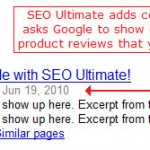While working on an internal document dubbed “The SEO Playbook” the question of which strategy is better, sub domains or sub folders?, flat site architecture or themed and siloed content? What follows is a peek from the SEO Design Solutions Playbook.
The strategy of employing sub domains or building relevance for the root domain depends on (1) the market and competitiveness of the keywords (2) how much content is required to cross the tipping-point to acquire traction in that market and (3) if you are dealing with flat site architecture (hundreds to thousands of pages in one folder) or nested layers of tiered / faceted navigation for thousands of products in an e-commerce environment.
Other considerations are which category pages are prominent and rank for multiple wild card keyword variations and which internal pages do you intend to pass link weight to?
Depending on the dozens of potential nuances and their respective advantages and pitfalls, the choice of flat or themed site architecture, dynamic or static can either make or break an anticipated keywords ranking time line.
Each site has a different tactics and requirement; however this falls under the category of initial planning and site architecture and is one of the most important metrics for consideration prior to initiating an SEO campaign.
Tactical Overview:
The flatter the site architecture (less sub folders or sub domains) the easier the SEO becomes (as PageRank and latent pent-up ranking credit has a tendency to move upward to the top of the root domain).
This means that you should try to use keyword-rich domains in tandem with keyword-rich URL naming conventions where possible i.e /electronics.com/black-apple-ipod.html vs. creating a category or black/blue/red/ and /apple/ipod/ etc. Sub domains can be used to supplement domain names that lack the proper semantic conventions (which can be added as a prefix) to GEO target or target keyword-rich modifiers and phrases by implementing a synergy of domain, title and URL structure coherently.
The more information you can put into the meta title, meta description and URL naming convention in a flat site architecture environment, the less you will need to theme and silo (build pages from sub folders or sub domains) to increase relevance.
The rule of thumb is, the further away you push the domain structure away from the root, the more link-flow you will have to supplement those folders and subsequent nested pages with addition links to create buoyancy in search engines.
The larger the site, the more difficult it can be to build deep links effectively from a variety of sources. This is why you should implement strong internal linking to in unison to tactful uses of title tags to produce an effective allintitle and allintext “punches in bunches” dynamic product and SKU (stock kept unit) based site.
If the pages are linked properly, they can create an internal link dynamo that can push Page Rank and other favorable algorithmic elements to pages in need of nourishment.
If you have a large site with multiple categories, first (1) consider creating a broad level URL subfolder which encompasses the top level theme such as (computers, smartphones, etc.) then using the second part of the naming convention on the URL and title level to create a relevance trifecta for the more specific and granular metrics based on keywords that people might type in to a search engine.
Using the above example:
www.domain.com/smartphones/black-i-phone.html and someone searched for black smartphones or black iphone (that page would be relevant (due to the category and title of the page) which could also have modifiers and secondary links to the red, blue, pink, models with respective modifiers (cheap, affordable, deals, etc.) in the meta data on those target pages.
The extent it ranks depends on (1) internal site link weight (2) off page peer review and citation from other sites and their respective links and (3) the degree of trust and authority the themed pages can push to each other.
Also, each page in the nested silo should link up (and not lateral to other sub folders) to the top level category page in that theme (smartphones) so, the category page could eventually rank for every variation of the nested pages content (since they link to it, they endorse it and a portion of those pages collective wild card keyword profile transfers its ranking equity to the designated category page).
To take it a step further, if you created the nested content in a sub domain electronics.domain.com/smartphones/black-i-phone.html then you can also have a corresponding landing page in the root such as: domain.com/black-i-phone which will serve as the main catch-all page for that keyword and receive all of the latent ranking potential of dozens or hundreds of posts, pages, articles, reviews, internal links, etc. just from making sure that category page links to the preferred landing page in the flat portion of the site with a “targeted” competitive keyword.
Which Method is Most Effective?
This way you manage the link equity in a website is based on the strategy such as (1) to build authority you need content (2) you need link diversity and (3) you need citation – so, it’s easier to get a broader spectrum of links to a target domain then consolidate the link flow internally through the way you set the site up vs. sculpting it later by using (a) RSS aggregators, do-follow social media sites and do-follow article directories, etc.
Then leverage that IP diversity and link flow to push it up the chain to the category level, to the main landing page and then back into the category page to score double rankings in search engines.
Subfolders are naturally implemented in the Tree-like WordPress category structure to provide topical reinforcement for specific keyword targets here is a simple method of Siloing a WordPress Blog.
If a website lacks structure, is static or unoptimized, consider site migration into a WordPress powered environment, where site wide or template-specific widgets and or elements can be implemented and leveraged without trying to attach a rocket on a rusty wagon trying to make it faster to outperform a sports car.
Sub domains are only needed if you need to diversify from your parent theme with a new offering and can dedicate an entirely unqiue link building program for each sub domain to provide buoyancy.
In this instance, it’s better to use Redirection a plugin for WordPress, and use keyword-rich categories to fix the site structure BEFORE investing anything into the content development, syndication or off page link building process to mask the inadequacies of the site structure through brute force or other least significant metrics.
These are just a few of the underpinnings or SEO site structure which if combined with tactical deep linking and content development can catapult a new website into a competitive vertical in a fraction of the time.
One thing is certain, your SEO approach will be tested by and must adapt to:
- Cutting edge advances in hardware (such as Google Caffeine)
- Newly implemented infrastructures which have superior intelligent algorithms to spot inaccuracies &
- pure competition on a playing field where only the top 10 matters
The answer ultimately depends on the needs of your business model. We prefer to theme and silo and devour the head and long-tail of traffic, others like the semi competitive high volume broad match phrases.
If you want to target competitive keywords, then use theming and siloing to capture all the semantic variations along the way. However, if you have an e-commerce / product based website, then keep your hops to a minimum and keep the naming conventions for URL’s flat and extremely descriptive (using up to 4 keywords with hyphens).
Then when its time to feed those pages, just a few deep links to each category page can set off a ranking chain reaction (forcing more page rank to move throughout the site).
More pages equates to more page rank, and the more page rank you have, the more frequent crawls your pages can garner. With the added value of increased crawl frequency and by implementing tactful tweaks to your titles, internal links or tags you can create a torrent of link equity to dial in competitive mid tail keywords.
We wish we could share more of the internal strategies and tactics, but just wanted to share a glimpse of some of the stuff that happens around the water cooler at SEO Design Solutions. There are roughly 100 metrics we are compiling into an SEO Playbook, perhaps we can roll out an e-book in the near future (if time permits).
In the meantime, feel free to subscribe to our RSS feed for additional SEO tips or stay tuned for recent updates and upgrades on the SEO Ultimate WordPress Plugin which is currently at version 3.6.









Thanks for posting this blog.
“perhaps we can roll out an e-book in the near future” +1 on this Jeffrey. Would love to buy something like that from you, especially if it included real-life examples of your SEO methods!
Justin
@Justin:
Considering I just wrote 91 pages of content in 3 days for an extensive site audit, there are tons of examples, links and opportunities to use that in a quick $9.99 tactical playbook.
When I get a chance to edit, I will let you know.
All the best
Great, I’ll look forward to it, thanks Jeffrey.
Please indicate about target highly themed sites. Often, according to the metrics site home page is a silo already. And it makes no sense to divide categories further. Or these categories should be ‘combined article topics’, ie variation of the main keyword.